As the 2025 edition of the Time Space Existence exhibition opens in Venice, MVRDV unveils the SOMBRA Pavilion, an innovative structure that fuses poetic homage to the sun with cutting-edge passive design. Created in collaboration with Metadecor, Airshade, and Alumet, the pavilion will remain on display at the European Cultural Centre’s Giardini Marinaressa until late autumn, showcasing a kinetic shading system that requires no electronics or motors to function.
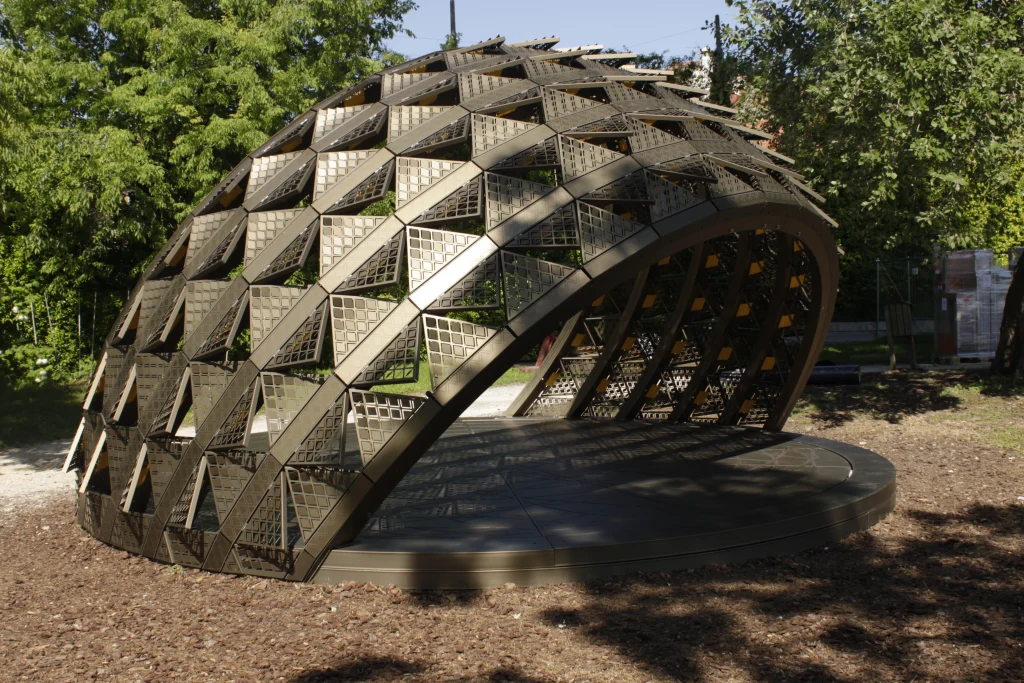
Inspired by heliodon devices traditionally used to study solar angles, SOMBRA is designed as a dynamic installation that reacts physically to sunlight. Its very name “SOMBRA” is derived from the Latin words sol (sun) and umbra (shade), capturing the pavilion’s dual identity as both a sun catcher and a shading device. The structure’s six ribbed arches, made from repurposed metal beams, correspond to the angles of the sun during the summer and winter solstices, forming a sculptural spine that anchors its unique functionality.
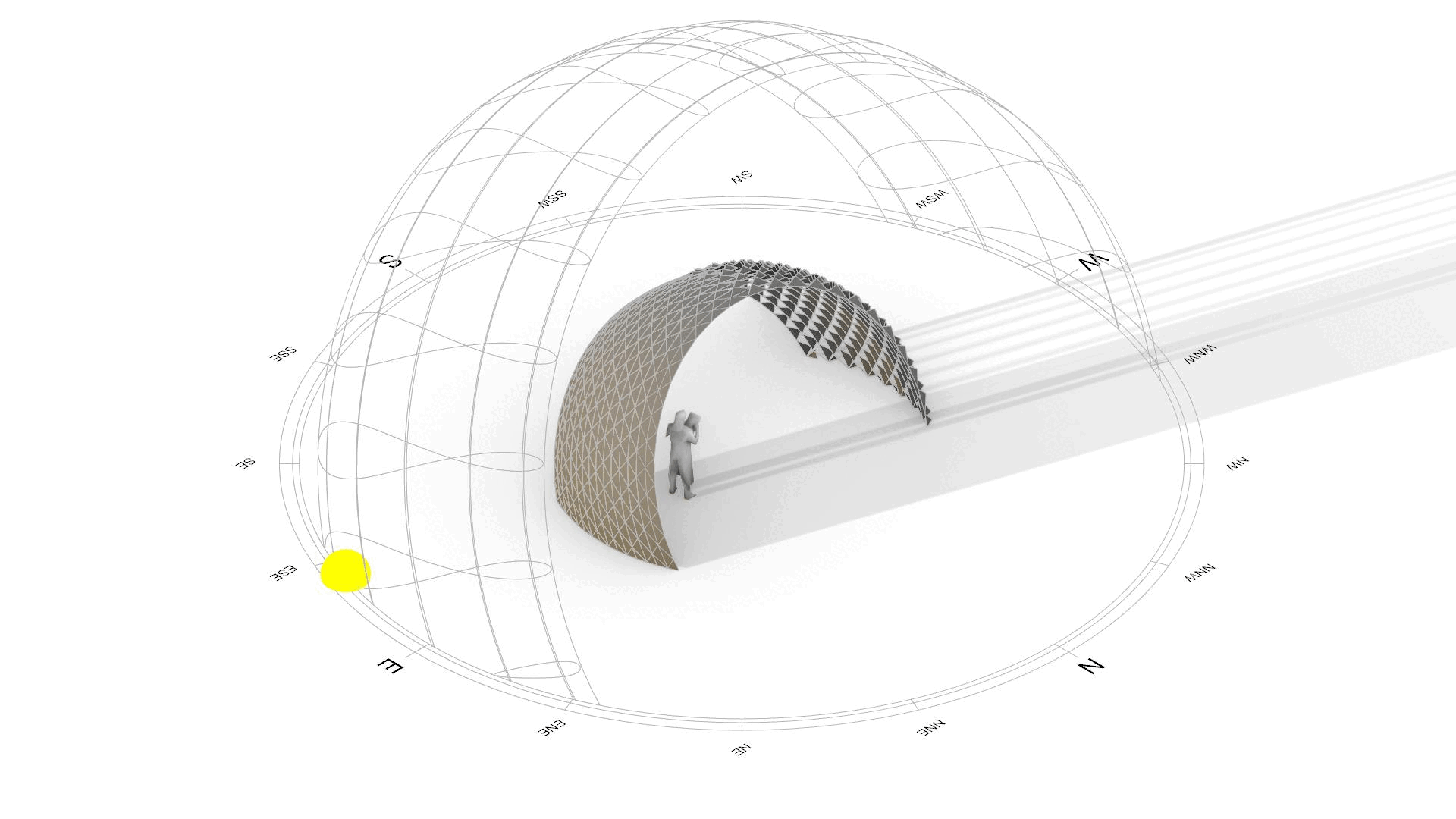
Each rib supports a series of triangular, perforated panels made with Metadecor’s MD Formatura screens. These panels are not just decorative; they open and close in real time in response to sunlight. In their natural resting state, the panels remain open, allowing filtered views through the structure. But when exposed to direct sunlight, they slowly close, providing cool shade to those below. The effect mimics a living, breathing organism, one that adjusts its form as the sun traverses the sky.
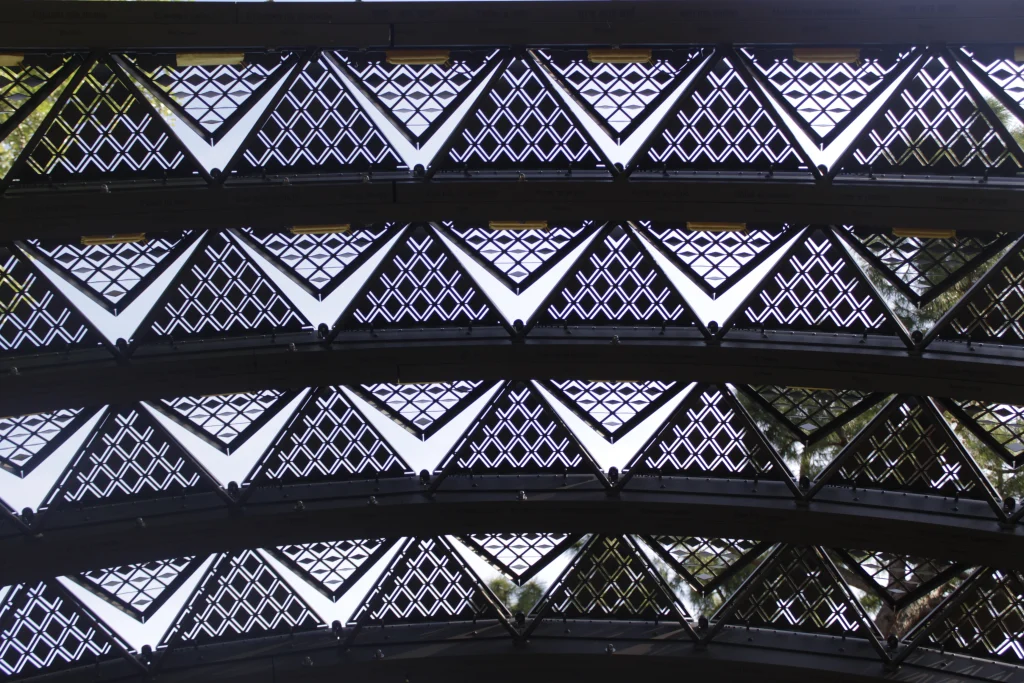
This natural movement is powered entirely by physical forces. The technology at the heart of the system, developed by Airshade, uses small canisters hidden within the ribs of the structure. As these canisters heat under sunlight, the internal air pressure increases, inflating small airbags that activate the panels via soft-robotic mechanisms. As the airbag contracts, it works against the spring-loaded hinges of the panel to create movement, no motors, no wiring, just passive environmental response.
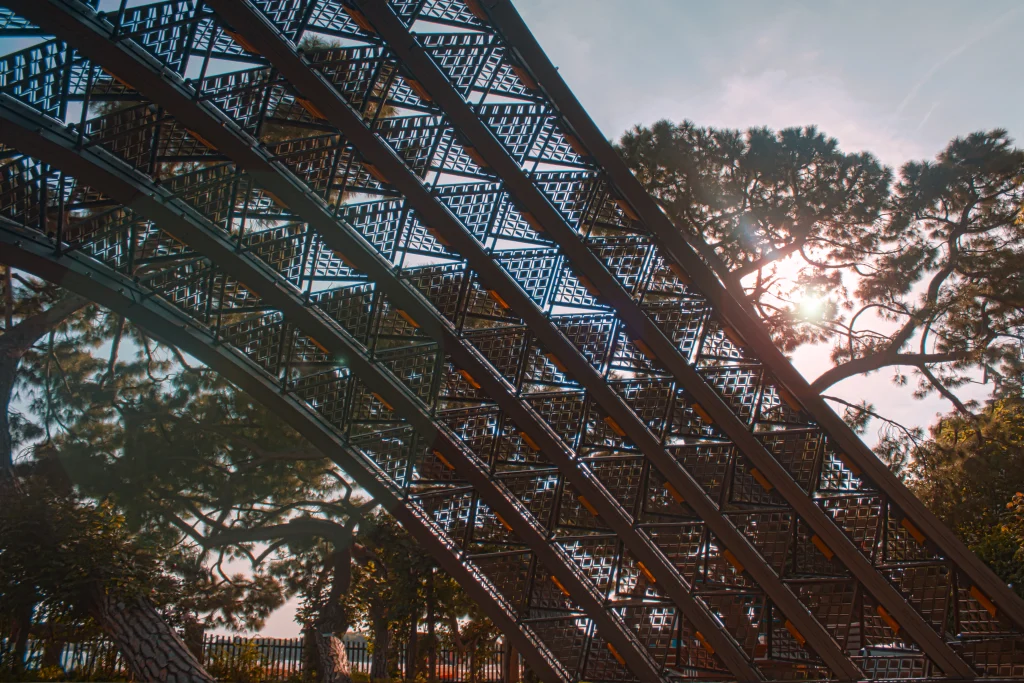
“The climate crisis demands new ways of thinking,” explains MVRDV partner Bertrand Schippan. “SOMBRA shows how architecture can learn from nature, how buildings can respond like plants, adjusting not just to climate, but to light, comfort, and energy use.”
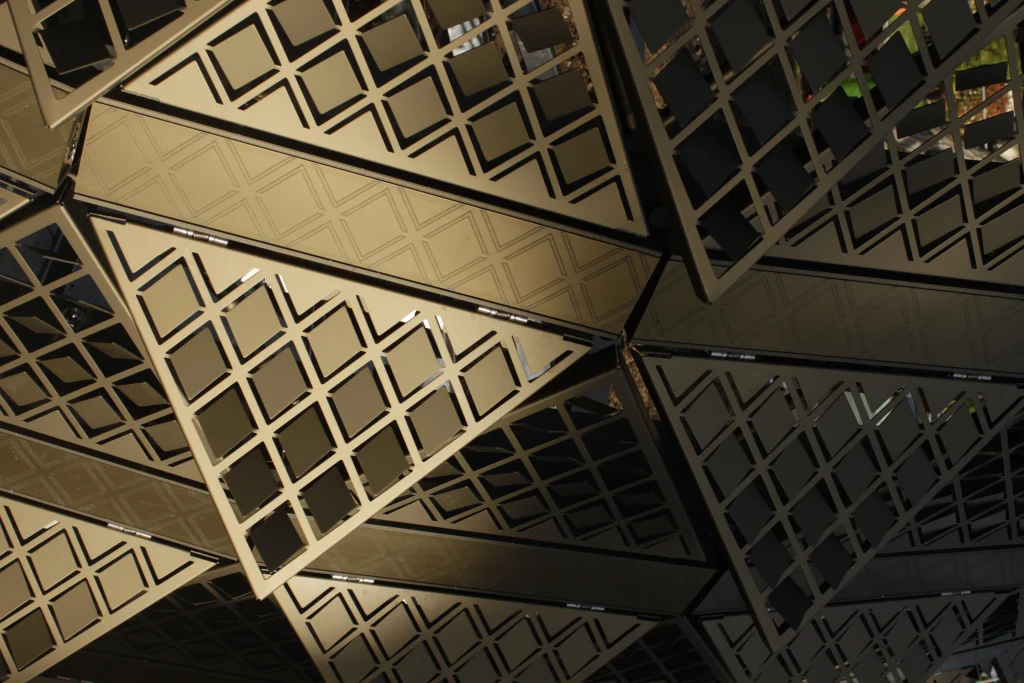
Beyond its innovative mechanics, the SOMBRA Pavilion pays tribute to the sun through symbolic design details. The base of the pavilion is etched with a polar sun path chart, mapping the data that informed its curvature. Meanwhile, the interior arches bear the words “sun and shade” in over 200 languages, a poetic reminder that the sun’s power, and our need to find shelter from it, is a global, shared experience.
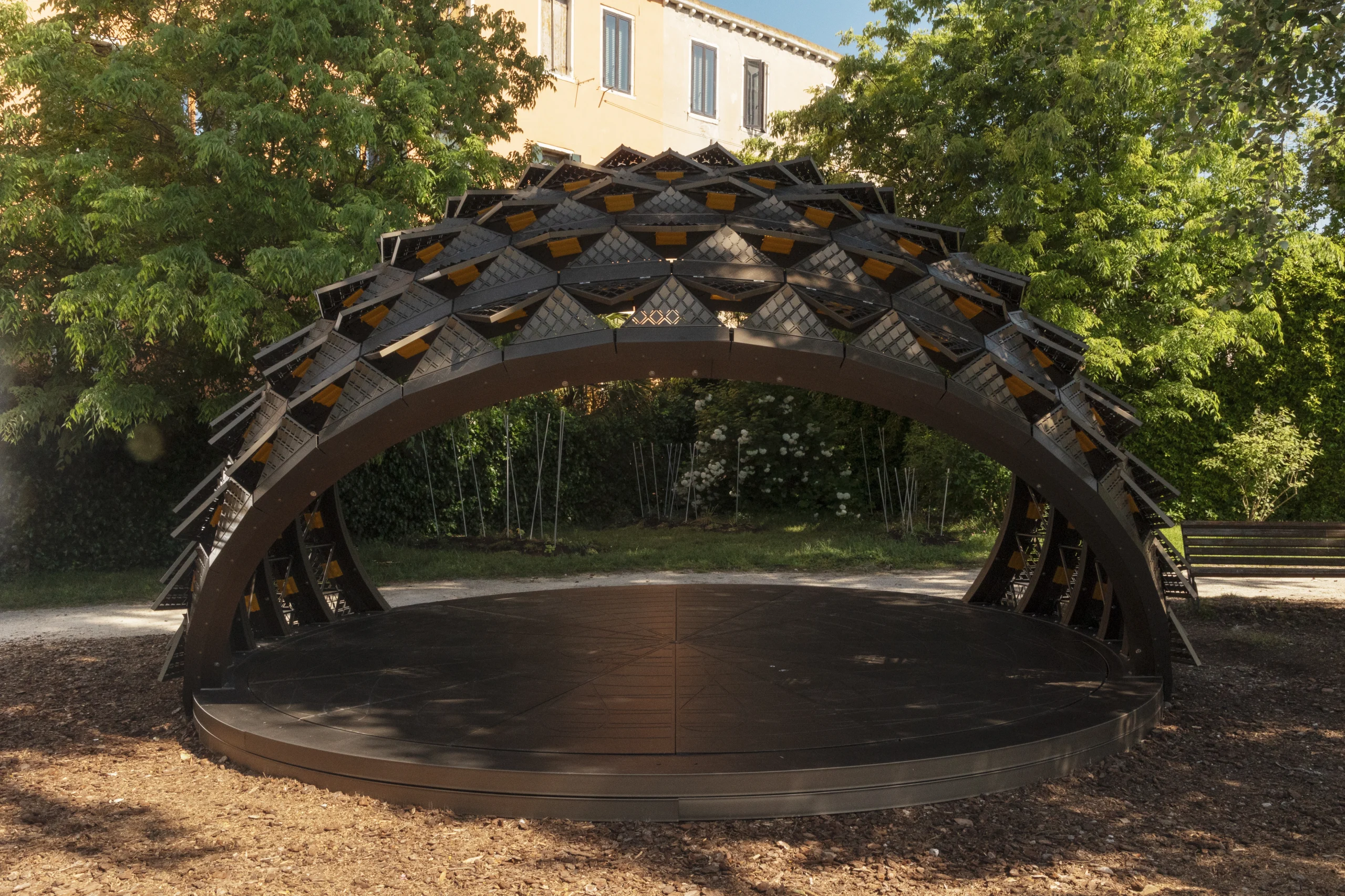
Built with support from Van Rossum Raadgevend Ingenieurs, Arup, Kersten Europe, and the AMOLF Institute, SOMBRA is more than an artistic installation, it’s a prototype for zero-operational-carbon architecture. Its ability to regulate light, heat, and airflow without electricity offers a glimpse into a future where buildings are not passive structures, but active participants in environmental stewardship.
The SOMBRA Pavilion will remain in Venice through autumn 2025 as part of Time Space Existence, with discussions underway to relocate the structure to additional international sites.




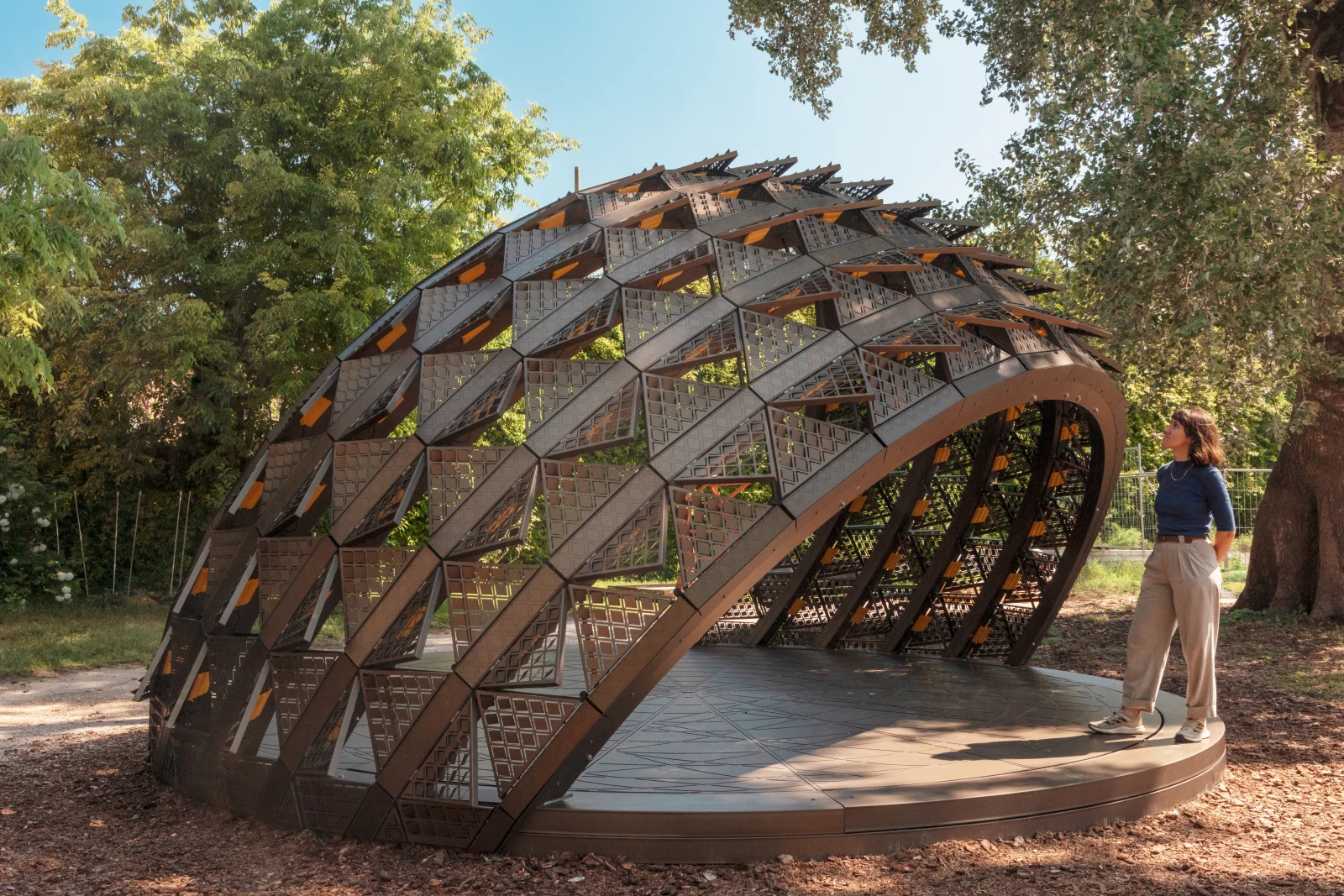




















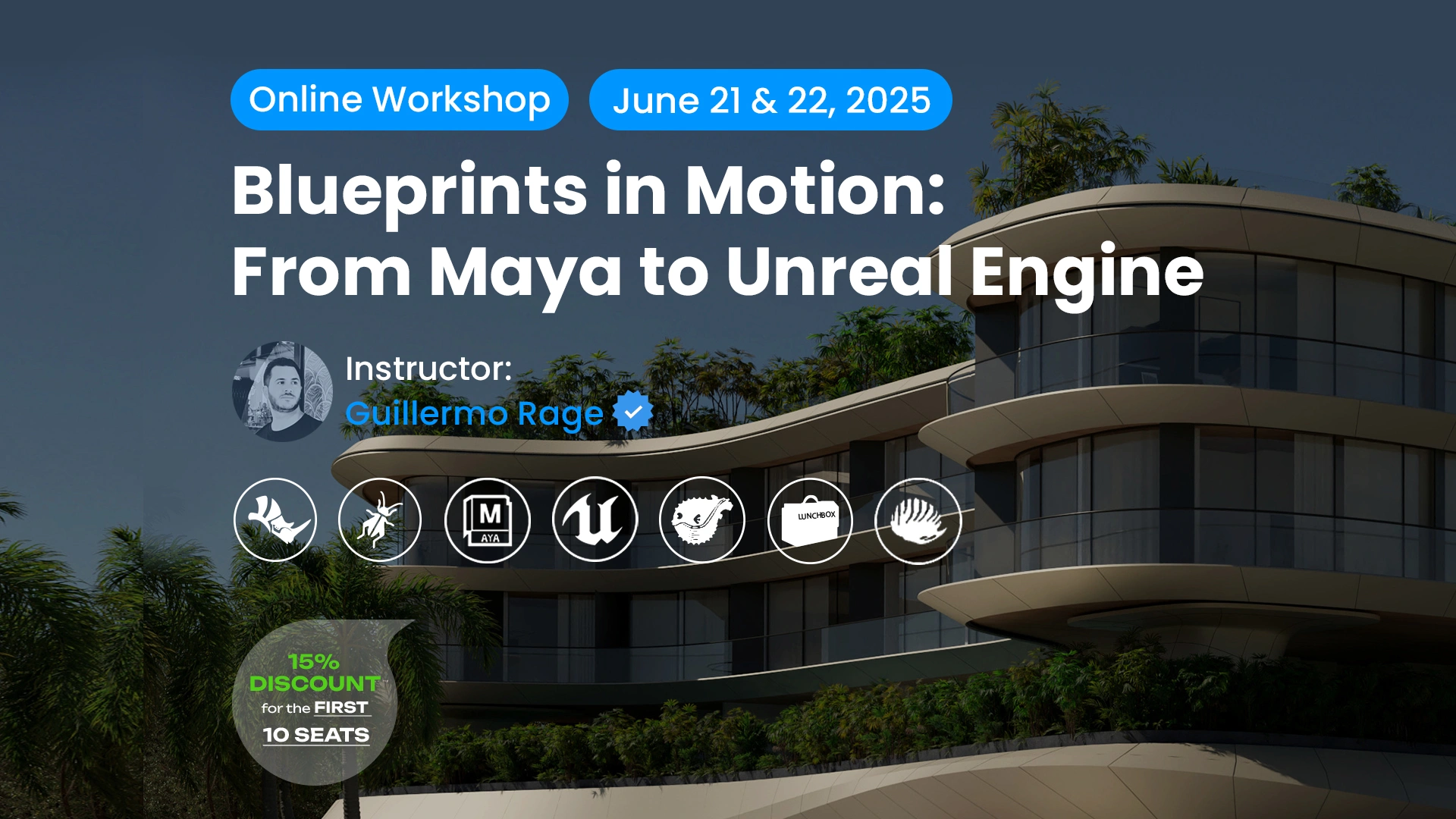












Leave a comment